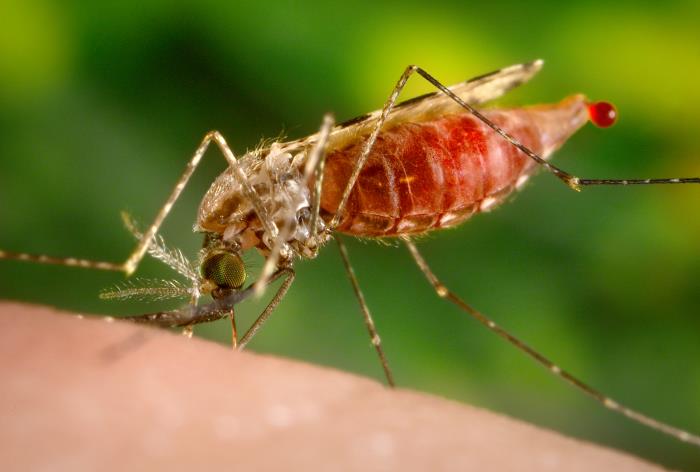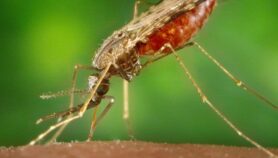24/01/20
40 per cent of mosquitoes ‘missed in indoor spraying’

By: Syriacus Buguzi
Send to a friend
The details you provide on this page will not be used to send unsolicited email, and will not be sold to a 3rd party. See privacy policy.
[DAR-ES-SALAAM] Mosquitoes that spread malaria parasites tend to rest on house surfaces usually not targeted during indoor spraying with insecticides in homes, a study says, making the need to review current spraying method developed several decades ago necessary.
In Africa, according to the study, indoor residual spraying typically targets mosquitoes resting on walls, and in few cases, roofs and ceilings. Little attention is being given to where malaria vectors actually rest indoors.
Most malaria cases, about 93 per cent, are in the African region, according to the World Health Organisation. In 2018, 94 per cent of malaria deaths occurred in the region.
According to the study, about 40 per cent of the 17,870 female mosquitoes rested on surfaces that are usually not given attention during house spraying, higher proportions found in metal-roofed houses.
“The knowledge generated in this study will shed light on initiatives to enhance effectiveness of interventions targeting malaria vectors in Africa.”
Betwel Msugupakulya, Ifakara Health Institute
“It is our belief that the knowledge generated by this study will shed light on initiatives to enhance effectiveness of interventions targeting malaria vectors in Africa,” says Betwel Msugupakulya, the lead author of the study and a biomedical and environmental researcher at the Ifakhara Health Institute, Tanzania.
“We emphasise on house improvement [such as house screening], which would reduce overall densities of malaria vectors inside houses”, Fredros Okumu, a co-author of the study and director of science at the Ifakara Health Institute (IHI) said.
The study published in the Malaria Journal last week (15 January) suggests a need to improve indoor spraying of the metal-roofed houses, and that the current method for spraying was developed several decades ago when houses in Africa were still mostly thatch-roofed.
Researchers studied the resting behaviour of two main species of malaria-transmitting mosquitoes — Anopheles funestus and An. arabiensis — and identified floors, furniture, hanging clothes and even utensils as the surfaces mostly not targeted during house spraying.
The study assessed the inside of 80 houses in four villages across Ulanga and Kilombero districts, South-Eastern Tanzania: 20 with thatched roofs and mud walls, 20 with thatched roofs and unplastered brick walls, 20 with metal roofs and unplastered brick walls, and 20 with metal roofs and plastered brick walls.
Mosquitoes were collected from each village during day and night, five days each week from January to July 2019. To avoid intrusion into people’s privacy, the late evening and late-night collections were done by trained household members.
The trained technicians and household members used devices that apply suction pressure to trap indoor resting mosquitoes.
“The proportions of mosquitoes resting on surfaces not typically sprayed were approximately one-third in grass-thatched houses and between one-half and two-thirds in metal-roofed houses,” the study says.
Okumu tells SciDev.Net that the findings do not necessarily mean that if insecticides are sprayed on walls, the chemical substances will not have impact on mosquitoes resting away from the walls.
Deus Kitapondya, a researcher and physician at the Muhimbili University of Health and Allied Sciences, Tanzania, says that the study addresses a contemporary public heath challenge in malaria control.
“This study has come at the right time because understanding the behaviour of vectors and dynamics is key in the fight against malaria transmission,’’ he tells SciDev.Net.
This piece was produced by SciDev.Net’s Sub-Saharan Africa English desk.
References
Betwel J. Msugupakulya and others Preferred resting surfaces of dominant malaria vectors inside different house types in rural South-Eastern Tanzania (Malaria Journal, 15 January 2020)













